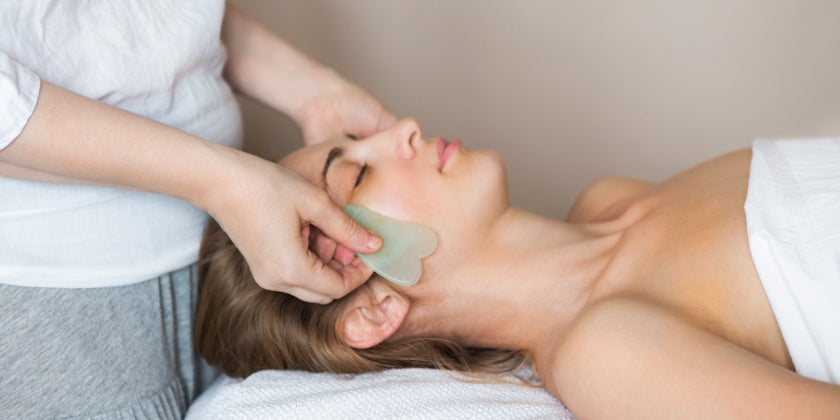Now that we’ve addressed Botox and the skin and muscle, let’s talk about a topic I'm extremely passionate about - Autoimmune disease. And before you think that this is something none of your concern – wait till I amaze you
The National Institute of Health estimates that over 23 million Americans suffer from autoimmune disease. However, this number shows only number of autoimmune diseases. We are clueless of the amount of undiagnosed individuals that is assumed to be very high.
Little do you know that autoimmunity comes in three stages: The third stage is the appearance of autoantibody cells concurring with tissue damage. Here, most individuals are diagnosed.However, many people live in the first two stages - the presence of autoantibodies without enough damage to warrant proper testing. People in this stage frequently come to my office after many trips to various doctors without finding an answer as to why they feel “blah” or “off” or “just not like myself.” Some individuals with an immune system sensitivity may notice changes in how they feel following certain stressors.
Sometimes it’s a traumatic event - a move, food poisoning, or even just stress (aka life). So why does this matter in the world of Botox? What do these things have in common?

"Our immune system react to the injection of any substance to our body"
If you are diagnosed with an autoimmune disease, it is preferable to check in with your rheumatologist, immunologist, or endocrinologist prior to getting a Botox injection. IN fact, the Botox insert itself recommends caution to individuals with neuromuscular disorders such as ALS and Myasthenia Gravis.
Those of us hanging out in stage three of autoimmunity (a.m. with a diagnosis) have likely learned by now that foreign substances totally don’t jive with our system. In fact, they can out right piss it off. Believe me, I had tough times learning it. When we inject something into our bodies, our immune systems will react. That’s its job. It says, “It says, “hey, something unrecognizable is here and we need to do something about it!” It means it activates the immune system in autoimmune disease, we’re already overproducing immune cells (those pesky autoantibodies I was discussing), and now we’re making more cells to fight the invader. I think you can probably see where I’m going with this…
Again, before you shrug this off as not important to you, remember that “blah” and “off” and similar feelings are commonly signs of those first two stages of autoimmunity. These are the times when supporting overall wellness may be especially beneficial. The stages that, if presented with a trigger, such as exposure to a new foreign substance, might tip us from stage two to stage three.
If you're exploring more holistic wellness practices, clean beauty routines may offer a more mindful approach. For those with sensitivities, it’s worth exploring all options and understanding how your body responds to cosmetic procedures.

Some individuals have expressed concern about their personal experiences with Botox, and online communities have formed to share those stories. So is the number of women speaking out about their negative experiences with Botox injections. In fact, there are whole Facebook groups dedicated to this. As with smoking, it was avidly popular, everyone was doing it, and over time, we started to observe that maybe it wasn’t such a fantastic idea to put a foreign, unnecessary substance into our bodies. Toxic things like tobacco and nicotine may be dangerous.
So If Not Botox, What?
As I said earlier, I am not posting this as a form of judgment, but rather in hopes of helping you make an educated decision on how you personally want to tackle your external aging regime. Botox alternatives have gained a lot popularity throughout the US and I don’t even know if it’s a good or bad thing in that so many people are reacting poorly that now they’re looking to fix an issue- or if it’s a good thing- that as more research about the negative side effects surface, people are hunting for cleaner options.
Being a Doctor of Acupuncture, some of the above stated information is my own personal clinical experience. Some of it comes from personal experience as an individual with autoimmune issues! And some of it comes from scientific research (if you’re curious, there are some references listed below). If you’d like to hear more about this topic, please comment below and let us know so we can keep the info coming. If you’d like to hear about clean beauty combined with internal health care that offers you an alternative to injections and fillers, please reach out to me at my acupuncture practice, Balanced Thistle.
Care Consideration: Just a reminder that the above information is not a substitute for medical care and is not a substitute for medical advice or recommendations from a healthcare provider. This information is not intended to treat, mitigate, or cure any disease. That said, we encourage you to connect with an Acupuncturist in your community to learn more about this and other Traditional Chinese Medicine options. If you’ve got questions about Chinese herbal medicine or getting started with an Acupuncturist, feel free to connect with us at hello@mydaolabs.com.

















